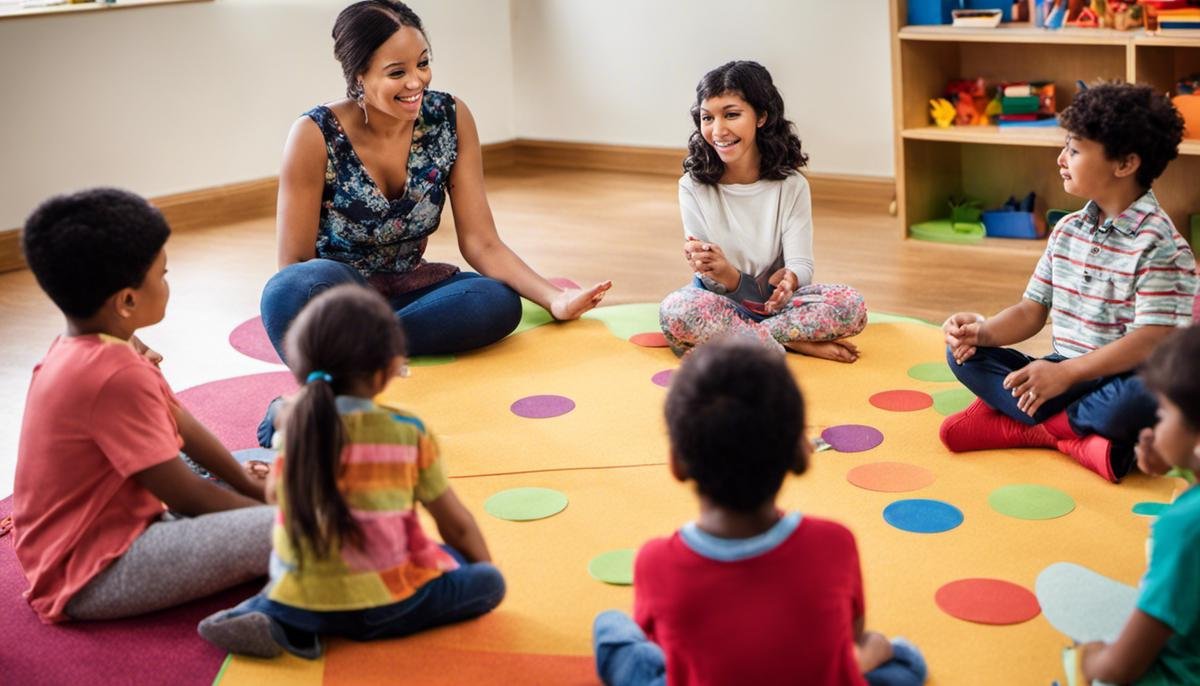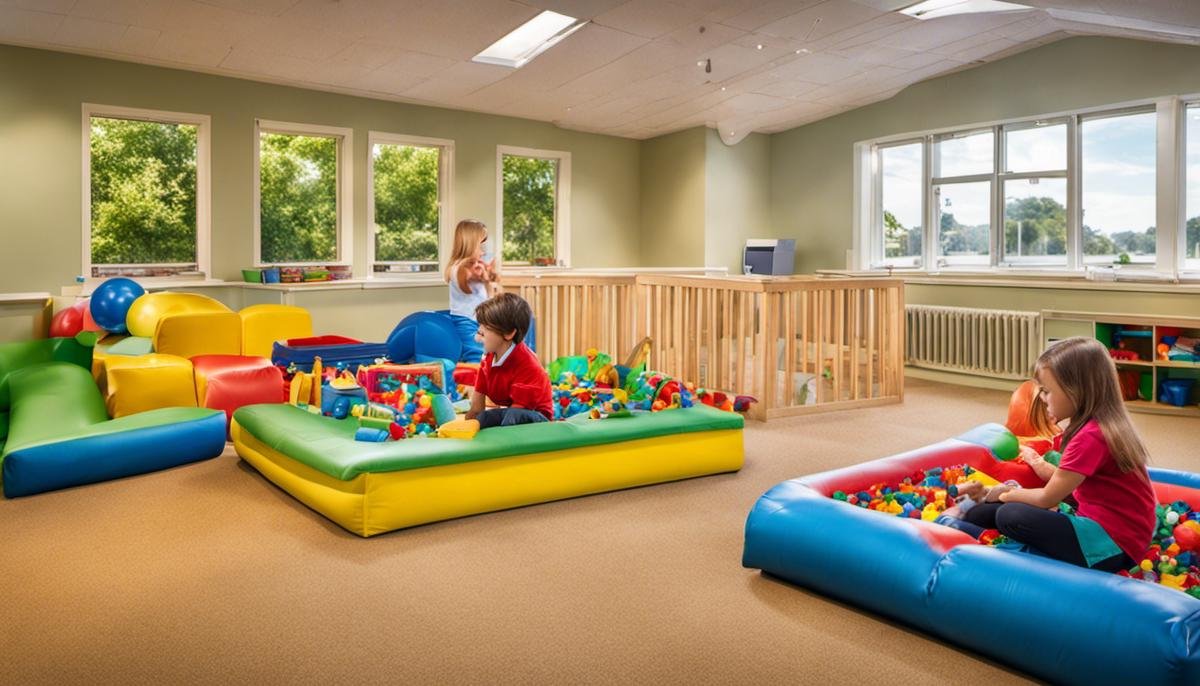
The unique world of children with autism is filled with untapped reflections of creativity, intelligence, and potentiality. Gaining a profound understanding of this cognitive variability equips us with the essential tools to design activities that foster their interests and capabilities, subsequently encouraging their growth and development. This crucial comprehension of Autism and its impact on a child’s life illuminates the path towards establishing rewarding interactions that are both enjoyable and meaningful. The creation of fun and interactive autism-friendly activities, which nurture their dexterity and spirit for play, calls for our empathy and knowledge of how autism manifests. By employing the right strategies, such as the inclusion of sensory inputs, visual aids, and a structured routine, we can craft these unique activities into vital therapeutic aids, driving the enhancement of their social development and communication skills.
Understanding Autism and Children
Embracing Uniqueness: Understanding the Unique Needs and Interests of Children with Autism
Autism, a developmental disorder that affects social interaction, communication, and behavioral patterns, offers its own unique charm and inherent talents. While raising a child with autism may come with its challenges, it’s a journey filled with incredible moments of learning, growth, and an opportunity to celebrate one’s unique abilities. As a community endeavoring to navigate the world of parenting and family lifestyle, it’s essential to understand the unique needs and interests of children with autism to provide them with the support they need.
At the heart of parenting a child with autism is understanding. While each child on the autism spectrum is unique, they often share similarities in their needs and interests.
- Need for Routine: Children with autism tend to feel most comfortable with routine and predictability. A sudden change of plan can be overwhelming, sometimes leading to feelings of confusion and distress. To mitigate these feelings, maintaining a consistent daily routine can help children with autism feel more secure and understand what’s happening next.
- Sensory Sensitivity: Whether it’s avoiding the splash of water or the tickle of a feather, children with autism often show heightened or reduced sensitivity to sensory information. By optimizing the environment, these children can feel more at ease. For instance, soothing colors, less clutter, and quieter surroundings may help in reducing sensory overload.
- Special Interests and Strengths: Children with autism often have passionate interests that might seem unusual or narrowly focused. Instead of discouraging these interests, empower them. Their intense focus could potentially develop into a future career or lifelong hobby. Celebrating these interests can also provide moments of joy for both you and your child.
- Social Interaction Struggles: Children with autism may require more explicit teaching in understanding social cues and developing social skills. Using social stories, role-playing, and other teaching strategies can foster their social understanding while respecting their comfort levels.
- Non-verbal Communication Support: Many children with autism communicate more effectively using non-verbal methods. Visual aids, such as pictures, diagrams, or technology can assist in expressing their thoughts and needs.
- The Need for Understanding and Acceptance: Above all, know that a child with autism has the same need as any other child: to feel accepted, loved, and understood. Be patient, be open, and be there, create an environment where they feel safe and loved.
Understanding the unique needs and interests of children with autism can be enlightening, opening up a window to a different way of perceiving the world. This knowledge is not just about helping them adjust to a neurotypical world, but also about learning how to respect and marvel at their unique perspective. As we journey together through life’s adventures, let’s celebrate each child’s uniqueness and strengths while providing them with the loving support they need to thrive. Through these efforts, we can embrace neurodiversity, making our homes and communities more inclusive, nurturing, and beautiful places.

Designing Autism-Friendly Activities
Crafting Engaging, Beneficial Activities for Children with Autism: A Step-by-Step Guide
Understanding autism’s unique characteristics, as we’ve previously discussed, is the first stepping stone to crafting engaging and beneficial activities for children with autism. Moving along this path, we delve now into the actual creation process and how to design these activities to suit their specific needs.
-
Adjust the Environment: Design an environment that is comforting for them. Avoid bright lights, loud noises, or other significant sensory triggers. A calm, orderly space not only minimizes sensory overload but can also help them engage better with the activity.
-
Keep it Simple, Keep it step-by-step: Break down the activity into small, manageable parts. This narrows down the focus to one step at a time, preventing overwhelming tasks and facilitating comprehension.
-
Make it Visual: As words might not always resonate with them, using visual cues, like pictorial instructions or physical demonstrations, will likely prove more effective.
-
Personalize it: Incorporate their special interests into the activities. If your child loves cars, think of a game that incorporates this interest. Such customization can initialize their engagement and, ultimately, benefit them in the learning process.
-
Promote Repetition: The value of repetition cannot be underestimated in the realm of autism. Repetitive tasks not only create familiarity but also help to hone their skills and boost their confidence.
-
Integrate Social Elements: Although we ought to consider their comfort with social interactions, gradually introducing elements that encourage social behavior can be beneficial. Activities involving taking turns or cooperative play could be a start.
-
Use Technology: Approved gadgets and digital tools could amplify their interest levels. Autism-friendly educational apps can be valuable companions, steering their engagement towards constructive learning.
-
Consider Sensory Experiences: With sensitivity towards their sensory issues, activities that subtly stimulate their senses could be therapeutic. Painting, sand play, or water play could be contemplated upon, all in light of their individual comfort levels.
-
Use Non-verbal communication methods: Remember to incorporate their non-verbal communication strategies during these activities. Mirroring their movements, creating visual aids, or even employing simple sign language can foster deeper connection and communication.
Above all, patience, empathy, and love should be the pillars of these activity designs. Remember, the end goal is not just about engaging our children in an activity but about understanding, embracing their neurodiversity and letting them enjoy their individual journeys of exploration and development.
Whether you’re a parent, caregiver, or teacher, these guidelines will hopefully provide a clear path towards designing beneficial, engaging activities for your little ones diagnosed with autism. This path, studded with patience, perseverance, and a lot of love, will prove to be one of the most rewarding ones as we witness them bloom into their unique selves. Let’s keep paving this path with acceptance, understanding, and endless streaks of creativity!

Incorporating Therapeutic Strategies into Play
The utilization of therapeutic strategies can significantly enhance autism-friendly activities’ effectiveness by catering to the unique needs, interests, and abilities of children with autism.
Tailoring the environment has been proven to significantly boost active engagement, particularly with children on the autism spectrum. A calmer and structured setting can reduce stress, anxiety, and sensory overload. Including comforting and familiar elements can promote a feeling of safety, inviting them to participate in activities more willingly. For instance, using softer lighting, less noisy appliances, and offering a quiet space for them to retreat when they need, can go a long way in achieving this comfortable environment.
To prevent the feeling of overwhelm, it’s often more beneficial to breakdown activities into manageable steps. This simple approach of ‘task-analysis’ can make a multitude of activities more achievable and enjoyable for children with autism. Be it a simple task of brushing teeth or engaging in a board game, dividing steps aids clearer understanding and more problem-free participation.
The integration of visual cues and demonstrations can further improve a child’s comprehension and skill acquisition. Visual guides such as social stories, photos, and pictorial schedules can complement verbal instructions, aiding children with autism understand and process the sequence of activities.
Personalize activities wherever possible to match the child’s specific interests. This can significantly enhance a child’s motivation and engagement in an activity, as well as assist skill development in other areas.
Repetition serves as a critical element in skill development for children with autism. Through repetition, children can practice and hone their skills in a controlled and predictable environment before they can generalize these skills in different settings.
Gradually introducing social elements into activities can greatly foster social interaction. Initiating a play activity during a social gathering, or creating structured playtimes with peers, can provide a supportive platform for children with autism to interact, empathize, and understand others.
Don’t forget about technology! Innovative digital tools can prove to be interactive and engaging icons in an autism-friendly toolbox. Apps designed for children with autism can be utilized to enhance engagement, communication skills, and social interaction.
When planning activities, sensory experiences should not be overlooked. Activities that incorporate a combination of sight, touch, taste, smell, and sound can offer therapeutic benefits, while accommodating sensory sensitivity.
Non-verbal communication methods, whether it’s body movements, gestures, or visual aids, can serve as crucial supports for children with autism who might find verbal communication challenging.
Last but not least, essential to the heart of any activity design for children with autism are patience, empathy, and love. Finding joy in their amazing uniqueness, celebrating their accomplishments no matter how small, and understanding and acknowledging their struggles are central to creating activities that are not only autism-friendly but are also fulfilling and meaningful.
Indeed, all these therapeutic strategies in combination can enhance the effectiveness of autism-friendly activities, creating an nurturing environment that celebrates neurodiversity and facilitates growth and learning at a pace comfortable for children with autism.

Unlocking the potential of each child is rooted in our understanding of their interests and abilities. As we navigate the waters of autism, it becomes apparent that the right activities designed with care and structured play can be significant gateways to their personal growth. By carefully integrating beneficial therapeutic strategies into these activities, we are effectively setting a platform for these children to improve their social interaction and communication skills. Recognizing that autism is not a limitation, but rather a different lens to view the world, we can ensure each child receives the necessary support and encouragement. The efforts invested into making our world a place where autistic children can thrive will pay off in invaluable ways, fostering a society that celebrates diversity, inclusion, and the unique minds of the autistic community.




